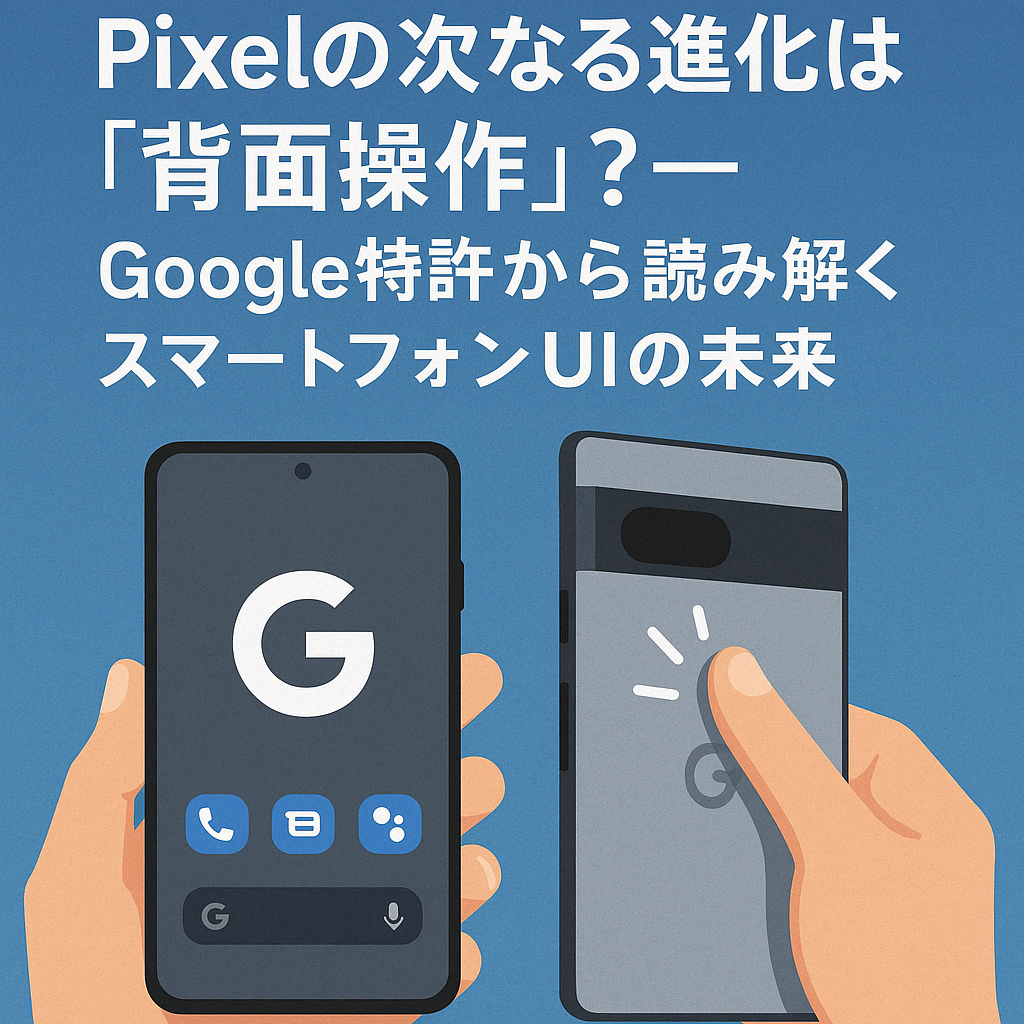As the announcement of the Pixel 10 family in 2025 draws near, attention is turning to Google’s next strategic move. A recently published patent from WIPO (World Intellectual Property Organization), titled “Leveraging Inactive Touchpoints for Gesture Recognition and User Interface Configuration,” proposes an innovative idea: adding touch and gesture recognition capabilities to the back of the smartphone.
This technology enables AI to determine whether a user is simply holding the phone or intentionally interacting with it, and optimizes responses accordingly. While the Pixel already features a “Quick Tap” function, the content of this patent greatly expands upon that, signaling a major advancement in UI design for the future.
The Day the Back Becomes a “Second Interface”
Until now, the back of smartphones has primarily been reserved for cameras. But if this technology is implemented, the rear panel could become a fully functional interface. Users may be able to control volume, media playback, or zoom without touching the screen—potentially transforming the entire user experience.
What’s particularly noteworthy is the integration with Google’s AI technologies. The idea of using machine learning models to distinguish between unconscious and deliberate gestures to prevent misoperations highlights the direction of AI-native UI development. It aligns perfectly with Pixel’s vision of an “AI-powered smart experience,” and could become a key differentiator in future products.
Ripple Effects on Hardware Design and the Accessory Market
If this rear interface becomes reality, it could significantly impact smartphone case design. Full-coverage protective cases may give way to bumper-style cases that expose portions of the back. It’s also possible that Google will release official cases specifically designed to support this new UI concept.
Will It Debut with Pixel 10?
Currently, there is no official confirmation that this technology will be included in the Pixel 10 lineup. Considering the patent’s timing and the implementation complexity, it’s more likely to debut with the Pixel 11 family in 2026 or later.
Nonetheless, this patent application clearly signals Google’s continued commitment to UI innovation. We may be shifting from an era where the display was the sole interface, to one where the entire device becomes interactive. The next frontier in smartphone UI may indeed lie on the back of the device.

